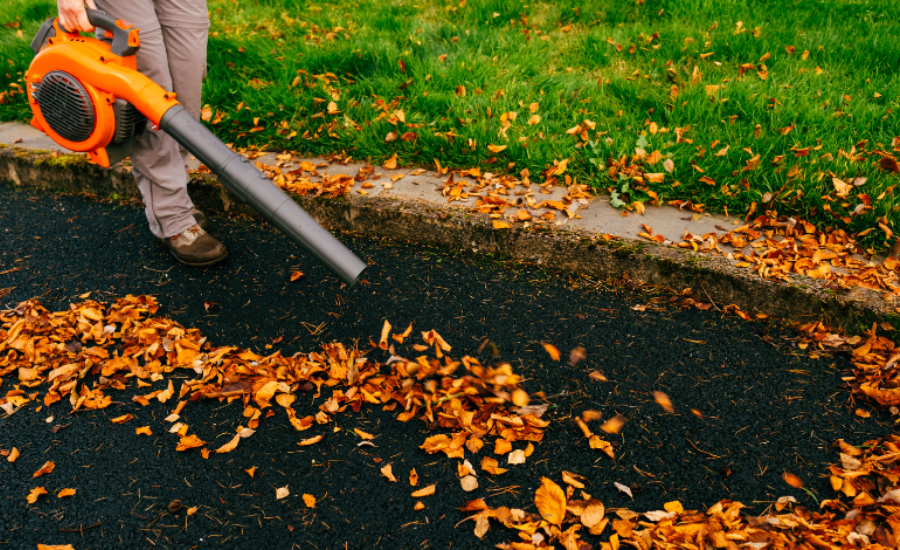A Complete Guide To Homelite Uv80522 Drain Plugs
Owning a Homelite UV80522 can present some interesting discoveries, such as its distinctive feature of having two drain plugs. This might seem unusual at first, but once you understand their function, it becomes clear how this design benefits your outdoor tasks. Whether you’re a veteran landscaper or new to the world of gardening, learning about the purpose of the two drain plugs on the Homelite UV80522 can significantly improve your equipment upkeep. Familiarizing yourself with this feature could streamline your maintenance process and prevent future issues, ultimately enhancing your experience with the tool. Let’s explore the reasoning behind this unique aspect and how it can work to your advantage!
Understanding Homelite Uv80522 Drain Plugs
Before diving into the specifics of the Homelite UV80522, it’s crucial to grasp the concept of drain plugs. In simple terms, a drain plug is a component used to release fluids from equipment. When it comes to the Homelite UV80522, these fluids typically include oil and other substances vital for the protection and optimal function of the machine.
Drain plugs are a key part of routine maintenance, allowing users to fully drain old or contaminated fluids from the equipment. This process ensures that fresh, clean fluids can be added, helping the machinery run smoothly and efficiently. Without effective drain plugs, the remnants of old fluids, including dirt and contaminants, can accumulate and negatively affect the equipment’s performance over time.
Why Two Drain Plugs Matter
The inclusion of two drain plugs on the Homelite UV80522 isn’t just a quirky design choice—it serves a deliberate and practical purpose aimed at boosting the machine’s efficiency and lifespan. But why are two drain plugs more beneficial than one? Here’s a deeper look at the reasons behind this thoughtful design feature.
Primary Drain Plug for Routine Maintenance

The first of the two drain plugs on the Homelite UV80522 is specifically designed for regular maintenance tasks. Its primary function is to allow users to easily drain the majority of fluids—such as oil—during routine upkeep. By removing this main plug, you can effectively release old, used fluids, clearing the way for fresh replacements.
This regular draining process is essential for maintaining the machine’s longevity and performance. Replacing old fluids with new ones ensures that all internal components remain properly lubricated and free from harmful contaminants. Additionally, it helps to prevent the buildup of sludge, debris, and other residues that could negatively impact the machine’s efficiency over time.
The Added Value Of A Second Drain Plug
So, what role does the second drain plug play? The secondary drain plug on the Homelite UV80522 offers additional convenience and precision. It’s typically located in a different area of the machine, allowing you to target and drain specific fluids more effectively. This becomes especially useful when you need to ensure that all remaining fluids have been completely removed, avoiding any leftover contaminants that might compromise the machine’s operation.
The second plug can also provide easier access in tight spaces or allow for quicker fluid removal without the need to tilt or maneuver the machine awkwardly. This design helps streamline the maintenance process, saving you time and effort while ensuring a thorough fluid change.
By understanding the importance of both drain plugs, you can improve how you care for your Homelite UV80522. This dual-drain system not only simplifies the draining process but also enhances the overall health and functionality of the equipment, keeping it in optimal condition for the long run.
The Role Of The Oil Drain Plug on the Homelite UV80522
The oil drain plug on the Homelite UV80522 plays a crucial role in maintaining the machine’s engine by facilitating regular oil changes. Like all gas-powered equipment, it’s essential to keep the engine oil fresh to ensure that the internal components remain properly lubricated, which in turn keeps the engine running smoothly and efficiently. Over time, engine oil breaks down, becoming less effective at reducing friction and preventing wear. Draining out old, degraded oil and replacing it with new oil is key to prolonging the engine’s life and maintaining optimal performance.
Where To Find The Oil Drain Plug
The oil drain plug is typically located near the bottom of the engine block, designed for easy access during routine maintenance. Its placement is intentional, allowing users to remove old oil without the need for disassembling parts of the machine or reaching into difficult or hard-to-access areas. This thoughtful design makes oil changes not only quicker but also far more efficient, minimizing downtime and ensuring that the task can be completed with minimal effort.
Importance Of Homelite Uv80522 Drain Plugs

The primary function of the oil drain plug is to enable efficient oil changes, which are essential to the longevity and performance of your Homelite UV80522 pressure washer. By simply removing the plug, you can drain old oil into a container, ensuring it is properly disposed of and replaced with fresh oil. This regular process helps to prevent engine overheating and ensures that the internal parts remain properly lubricated. Consistently changing the oil keeps the pressure washer running smoothly, even when performing heavy-duty cleaning tasks. Neglecting oil changes, on the other hand, can lead to engine wear, overheating, and potential damage, significantly reducing the machine’s lifespan.
How To Drain Oil Correctly Using the Oil Drain Plug
Maintaining your Homelite UV80522 involves following proper steps for oil changes, and the oil drain plug is central to this process. To begin, it’s advisable to run the engine for a few minutes before draining the oil. Running the machine briefly will warm the oil, reducing its thickness and making it easier to drain. After the engine has warmed, turn off the machine and let it cool slightly—this step is crucial for safety, as working on a hot engine can be dangerous.
Safe Oil Draining Process
Once the engine has cooled to a safe temperature, locate the oil drain plug at the base of the engine block. Position a container beneath the plug to catch the used oil, ensuring that it doesn’t spill or make a mess. Using a wrench, carefully loosen and remove the plug, allowing the oil to drain completely into the container. Depending on how much oil is in the engine, this step may take a few minutes. It’s essential to let the oil drain fully to remove all the old, dirty oil before replacing it with fresh oil.
Refilling with Fresh Oil
After the oil has drained, reattach the oil drain plug securely, but be cautious not to overtighten it, as this can damage the plug or the threads on the engine block. Once the plug is in place, you can proceed to refill the engine with new oil. Be sure to use the type and amount of oil recommended by the manufacturer for optimal performance. This step is vital, as using the wrong oil type or amount can negatively affect the machine’s functionality. Regularly following these oil change steps ensures that your Homelite UV80522 remains in peak condition, ready to handle both medium and heavy-duty tasks without a hitch.
Why Are There Multiple Drain Plugs?

Multiple drain plugs, like those found on the Homelite UV80522, serve several important purposes that enhance the machine’s overall performance and maintenance. One key reason for having two drain plugs is to ensure more efficient fluid drainage. When there are two openings, fluids such as oil or other essential liquids can exit the system more smoothly, reducing the risk of blockages. This allows for quicker and more thorough drainage, ensuring that maintenance tasks are completed effectively.
Another benefit of multiple drain plugs is the versatility they offer in design. Having different plug placements enables users to easily access specific sections of the machine, making routine maintenance simpler. This feature is especially helpful when performing regular upkeep, such as oil changes or when troubleshooting potential issues. Each plug may be strategically positioned for a specific function, allowing for faster and more convenient access during repairs or fluid replacement.
In some equipment, like the Homelite UV80522, dual drain plugs also help in managing different types of fluids separately. For example, one plug might be dedicated to oil drainage while the other could handle fuel or other fluids. This separation is crucial for preventing cross-contamination, ensuring that oil, fuel, and other liquids remain clean and function properly. Proper management of these fluids is essential for maintaining the longevity and optimal performance of your equipment.
Having two drain plugs can also offer convenience during repairs or servicing. It allows quicker access to essential components that may need regular attention, saving both time and effort. Each plug plays a distinct role in ensuring the machine continues to operate smoothly and efficiently, contributing to the equipment’s overall reliability.
How To Identify the Function of Drain Plugs on the Homelite UV80522
Determining the exact function of each drain plug on your Homelite UV80522 requires a careful inspection and understanding of your machine. Begin by visually examining both plugs. Many times, manufacturers include labels or markings near the plugs that indicate their specific purpose. These markings can provide immediate clues as to whether a plug is meant for oil drainage or another fluid, such as fuel.
Another effective step is to check your equipment’s manual, which often contains detailed information about the placement and purpose of the drain plugs. If you don’t have access to a physical manual, an online search can be a useful alternative. Many manufacturers offer digital versions of their user manuals, which can provide important insights into the functions of your Homelite UV80522’s drain plugs.
To gain a more practical understanding, you can also perform a simple test. Begin by filling the relevant compartments with water or a safe fluid. Then, open each drain plug one at a time and observe how the fluid drains. Pay attention to which compartment is being emptied and how efficiently the fluid exits. This experiment will help you identify which plug controls which fluid type and will provide valuable information about how the plugs function under real conditions.
If you’re still uncertain after conducting these tests, consider seeking help from online forums or customer support services. Many users share their experiences and advice in forums dedicated to specific products, and you may find valuable insights from other Homelite UV80522 owners. Engaging with others who have the same equipment can help clarify any remaining questions you may have about the drain plugs’ functions.
Steps To Identify the Function of Each Drain Plug
- Visual Inspection: Begin by thoroughly inspecting both drain plugs on your Homelite UV80522. Look for any identifying labels, symbols, or markings that may indicate their specific purpose, such as “oil” or “fuel.”
- Consult the Manual: Refer to the owner’s manual for detailed instructions regarding the function of each plug. The manual should outline the purpose of each plug, their locations, and any unique features associated with them. If you don’t have a physical copy of the manual, an online search may provide a digital version with all the necessary information.
- Perform a Drainage Test: After ensuring all fluids are safely contained, carefully unscrew each plug one at a time. Observe how the fluids drain from the machine, noting any differences in the flow rate or volume. This will help you determine which plug is responsible for draining which fluid and whether they are designed for different functions.
- Test Under Operating Conditions: To gain more insights into the drain plugs’ performance, consider testing them while the machine is running or shortly after use. Observe how the machine behaves and whether draining certain fluids impacts its operation.
- Seek User Experiences: If you’re still uncertain, join online communities or forums dedicated to Homelite products. Other users may have already encountered similar issues and can provide helpful insights or share their experiences regarding the dual drain plugs on the UV80522. Customer support is another valuable resource for answering any lingering questions about the equipment.
By following these steps, you can better understand the purpose of each drain plug and how they contribute to the maintenance and performance of your Homelite UV80522.
Step-by-Step Guide for Draining Fluids
1. Preparation
Before beginning any fluid drainage process, it’s important to ensure the machine is completely powered off and has had enough time to cool down. This prevents any risk of burns or other injuries. Next, gather all the essential tools and equipment, including a wrench for loosening the drain plugs and a suitable container to catch the old fluid. Proper preparation will make the entire process more efficient and help you avoid spills or mishaps.
2. Remove the Primary Drain Plug
Using the wrench, carefully loosen and remove the primary drain plug. This plug is usually the first point of release for the majority of the fluid within the system. Allow the old fluid to drain completely into the container. Be patient during this step, as it may take a few minutes for most of the fluid to exit, depending on the type and quantity of fluid in the machine.
3. Remove the Secondary Drain Plug
After the majority of the fluid has been drained through the primary plug, it’s time to remove the secondary plug. This step is crucial for ensuring that any remaining fluid is also released, providing a thorough cleaning of the internal system. By draining from both plugs, you guarantee that no old fluid is left inside the engine or system, which could cause contamination when refilling with fresh fluids.
4. Clean the Drain Plugs
Once both plugs have been removed and the fluid has been fully drained, it’s essential to clean the drain plugs thoroughly. Over time, residue or contaminants can build up on the plugs, which can affect their performance or lead to improper sealing. Cleaning them properly helps maintain a secure fit when you reinstall them and reduces the chance of leaks.
5. Replace the Drain Plugs
After cleaning, reinstall both the primary and secondary drain plugs, making sure they are secured tightly. However, avoid overtightening, as this can damage the threads on the plugs or the machine itself. Properly tightened plugs ensure that no fluid will leak during the machine’s operation, helping maintain optimal performance.
Routine Maintenance Tips
1. Schedule Regular Inspections
To keep your machine running smoothly, it’s important to conduct routine checks on the condition of the drain plugs. Over time, plugs can wear down or sustain damage, which can affect their ability to properly seal and drain fluids. Replacing worn-out or damaged plugs promptly ensures that the fluid drainage system remains effective and prevents any unexpected leaks or issues.
2. Use High-Quality Fluids
Always use high-quality fluids recommended by the manufacturer for your specific machine. Inferior or incorrect fluids can affect the machine’s performance, potentially leading to overheating, increased friction, or other damage to the internal components. Following the manufacturer’s recommendations will help ensure the longevity and efficiency of your equipment.
3. Monitor Fluid Levels Consistently
It’s vital to regularly monitor the fluid levels in your machine, as well as to top up fluids when necessary. Keeping fluid levels within the recommended range helps prevent problems such as overheating or excessive wear caused by friction. Routine fluid changes are also an essential part of this maintenance, as they ensure your machine is always operating with clean, fresh fluids that can perform their function effectively.
FAQs
1. Why are there two drain plugs on the Homelite UV80522?
The Homelite UV80522 features two drain plugs to ensure thorough fluid drainage. The primary plug drains most of the fluid, while the secondary plug releases any remaining fluid, ensuring the internal system is completely cleaned and free of contaminants.
2. Where is the oil drain plug located?
The oil drain plug is usually located near the bottom of the engine block for easy access, making it simple to perform regular oil changes without disassembling the machine.
3. How often should I change the oil in the Homelite UV80522?
Oil changes should be performed as recommended in the user manual, typically after a set number of hours of operation or at regular intervals. Regular maintenance ensures smooth operation and prolongs the machine’s life.
4. Can I use any oil for the Homelite UV80522?
It’s important to use the type of oil recommended by the manufacturer to ensure optimal performance. Using incorrect oil types can lead to engine damage or reduced efficiency.
5. How can I prevent leaks from the drain plugs?
To prevent leaks, make sure the drain plugs are securely tightened after every fluid change. However, be careful not to overtighten, as this can damage the plugs or their threads.
Conclusion
Proper maintenance of the Homelite UV80522, including regular fluid changes using both the primary and secondary drain plugs, is crucial for keeping the machine in top working condition. These dual drain plugs are not just a design choice—they play an important role in ensuring a complete and thorough drainage process, which ultimately helps extend the life of the machine and keeps it running smoothly.
By following routine maintenance guidelines—such as monitoring fluid levels, using high-quality fluids, and inspecting drain plugs—you can maximize the efficiency and durability of your equipment. Whether you’re a casual user or a professional, taking care of these essential maintenance steps will ensure that your Homelite UV80522 performs at its best, delivering reliable performance for your outdoor projects.






